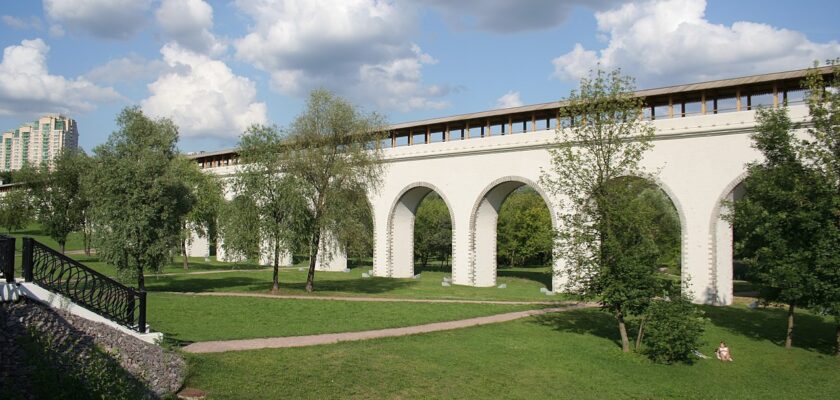Rostokinsky Aqueduct
Rostokinsky Aqueduct, erected in the late 18th century, crosses the floodplain of the Yauza River near VDNKh. The restored engineering structure turned into a pedestrian bridge has become one of Moscow’s landmarks. The aqueduct is surrounded by the park of the same name, which has gained popularity among Muscovites and tourists. Cultural events are held here all year round, attracting thousands of guests.
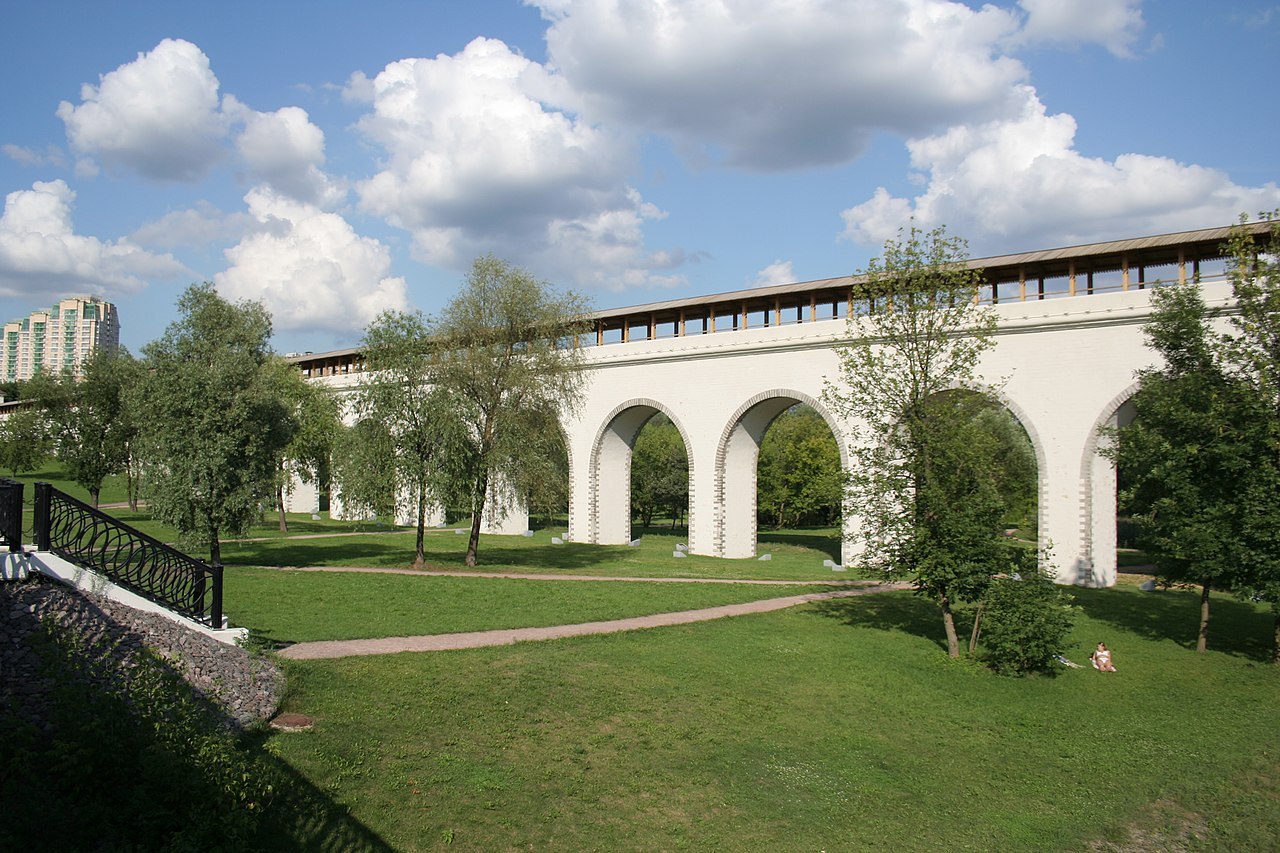
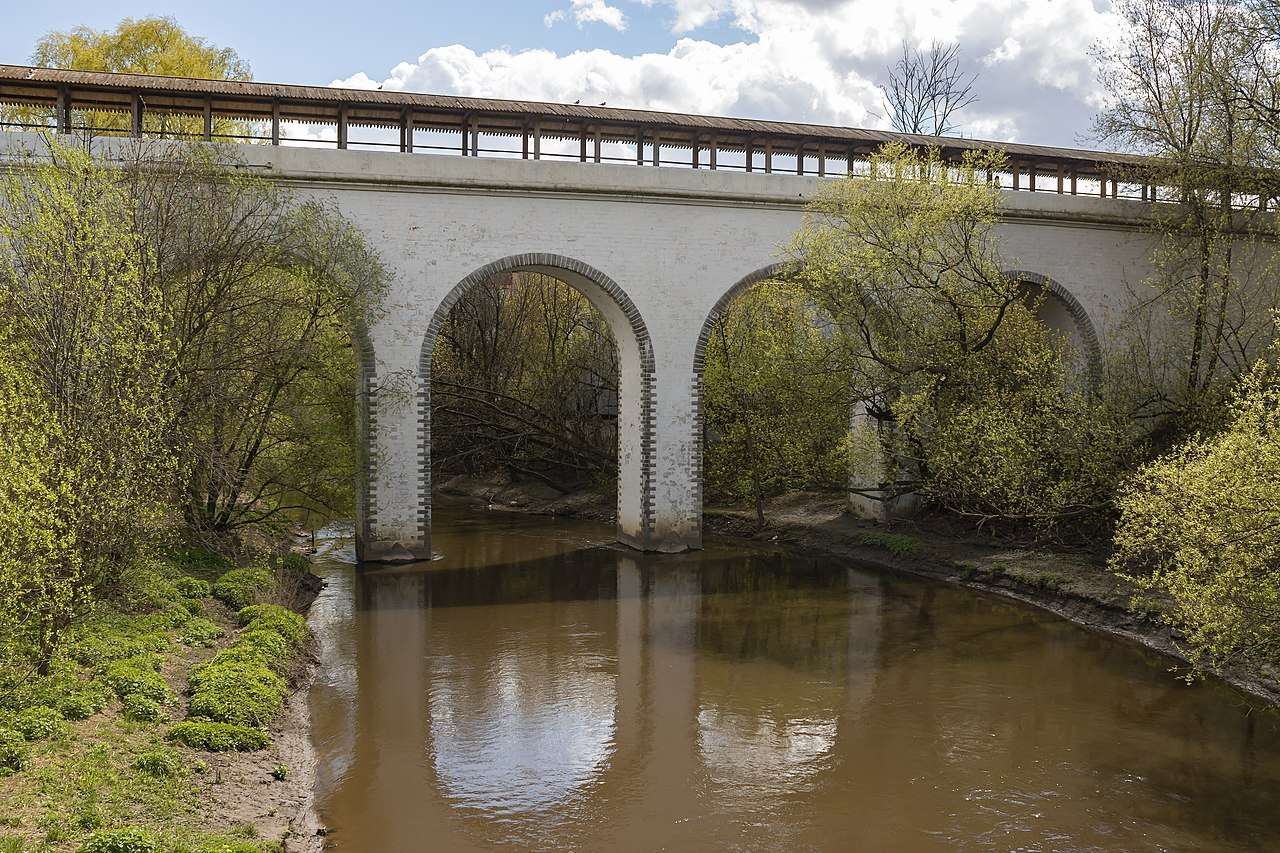
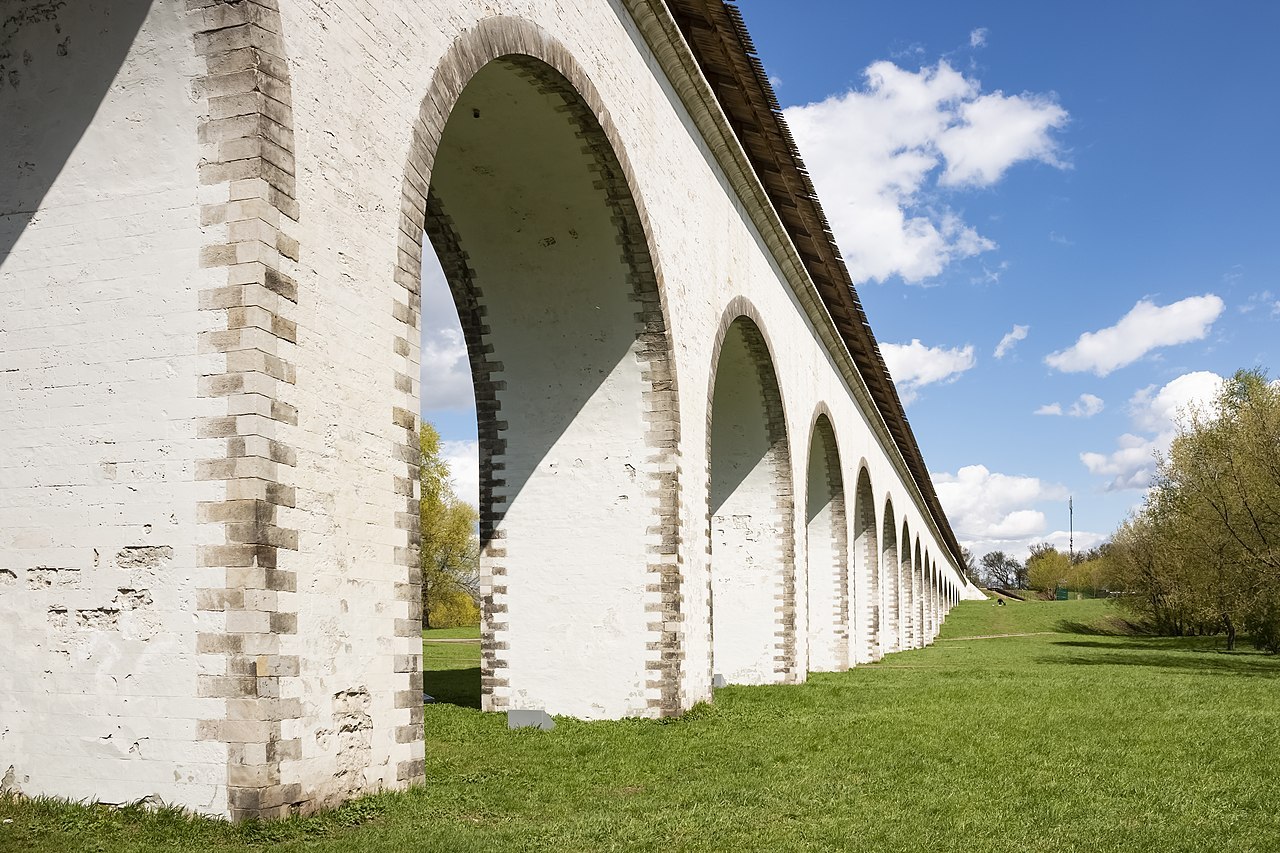
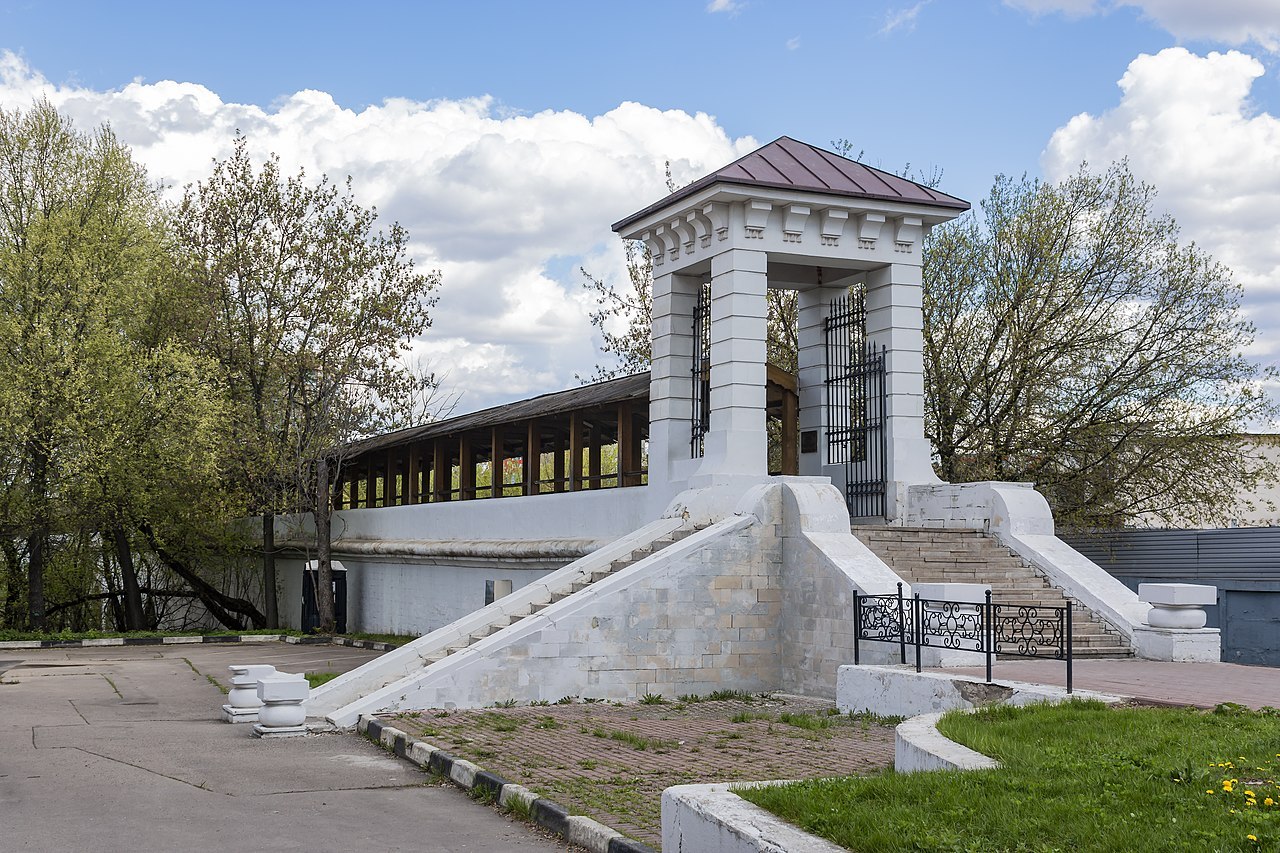
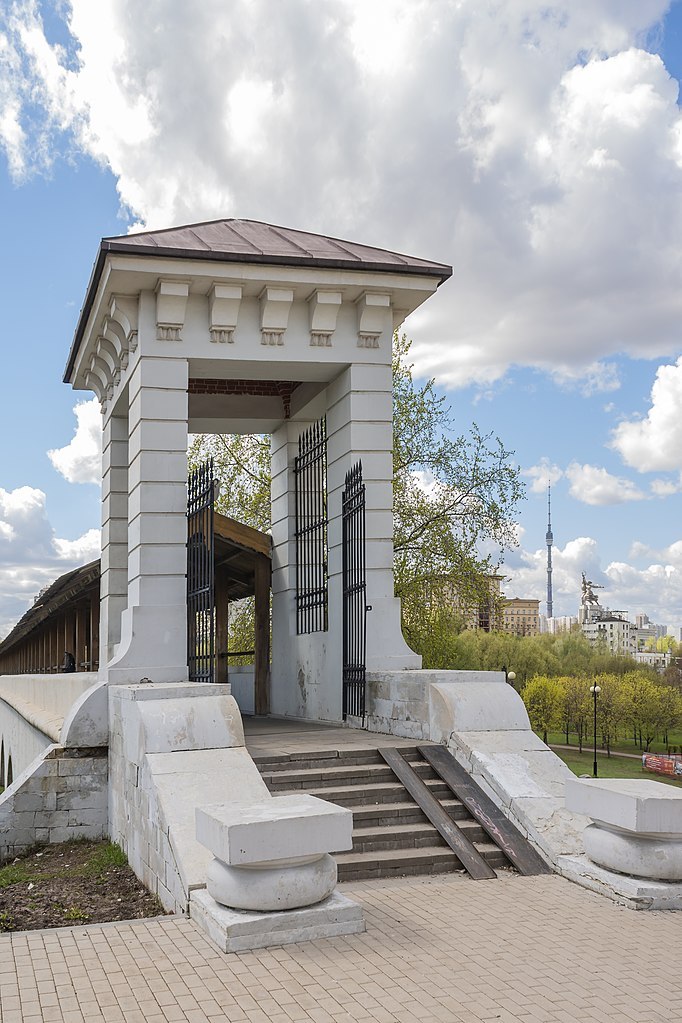
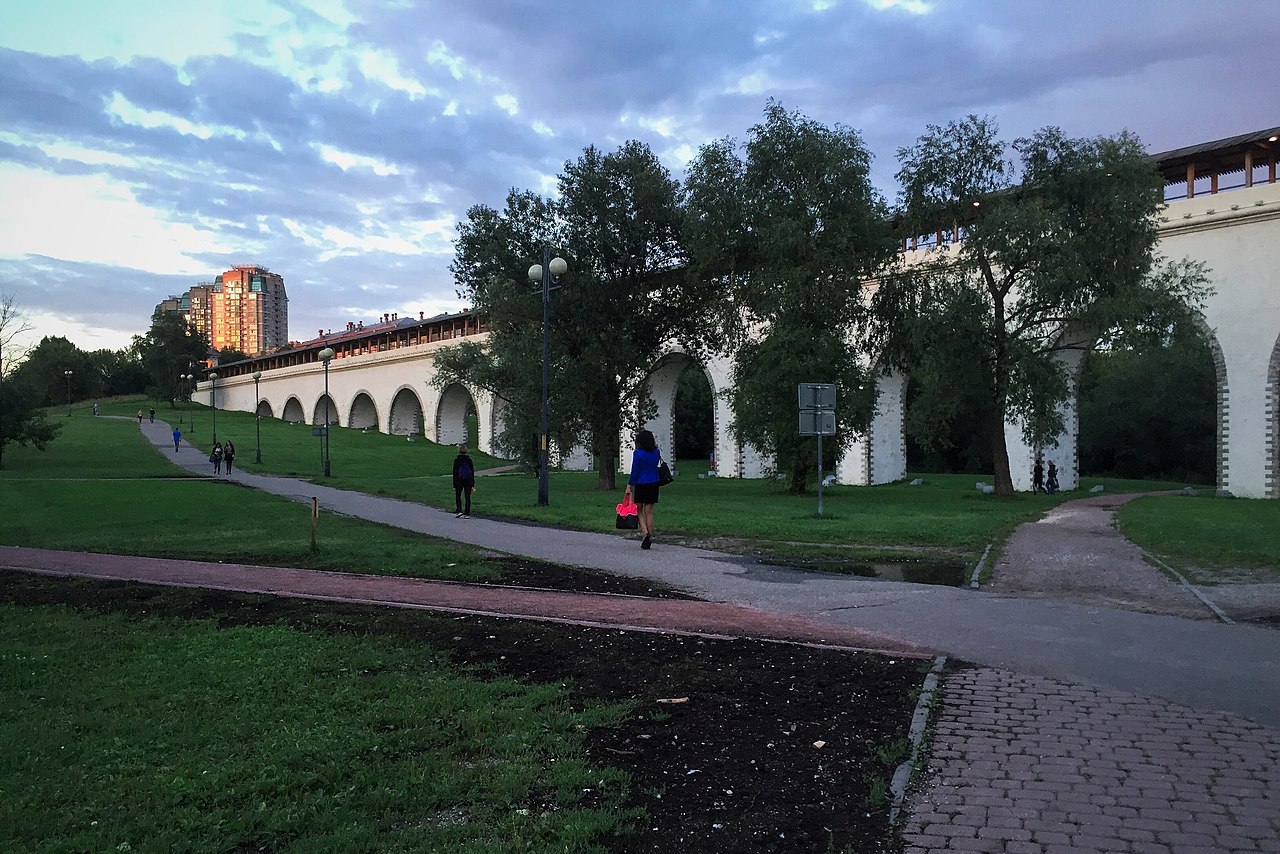
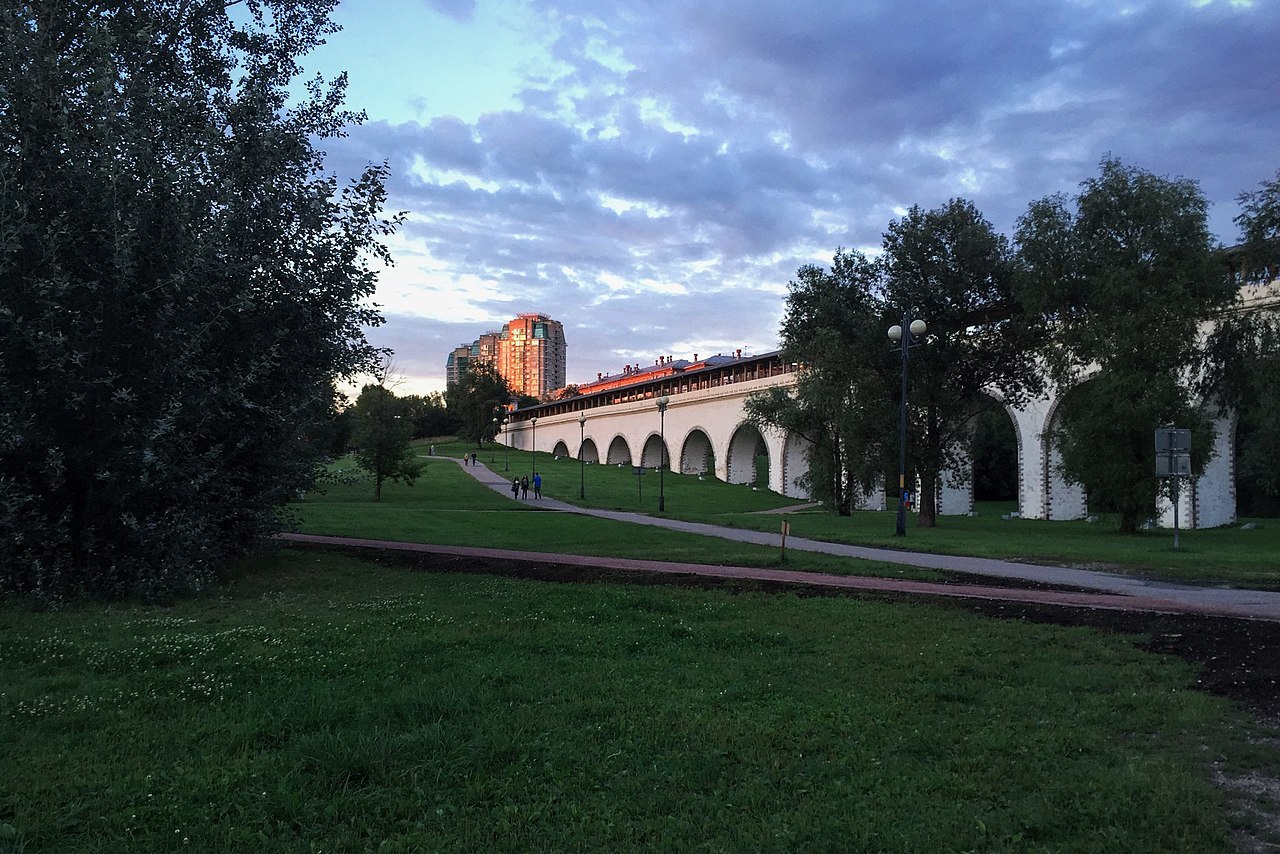
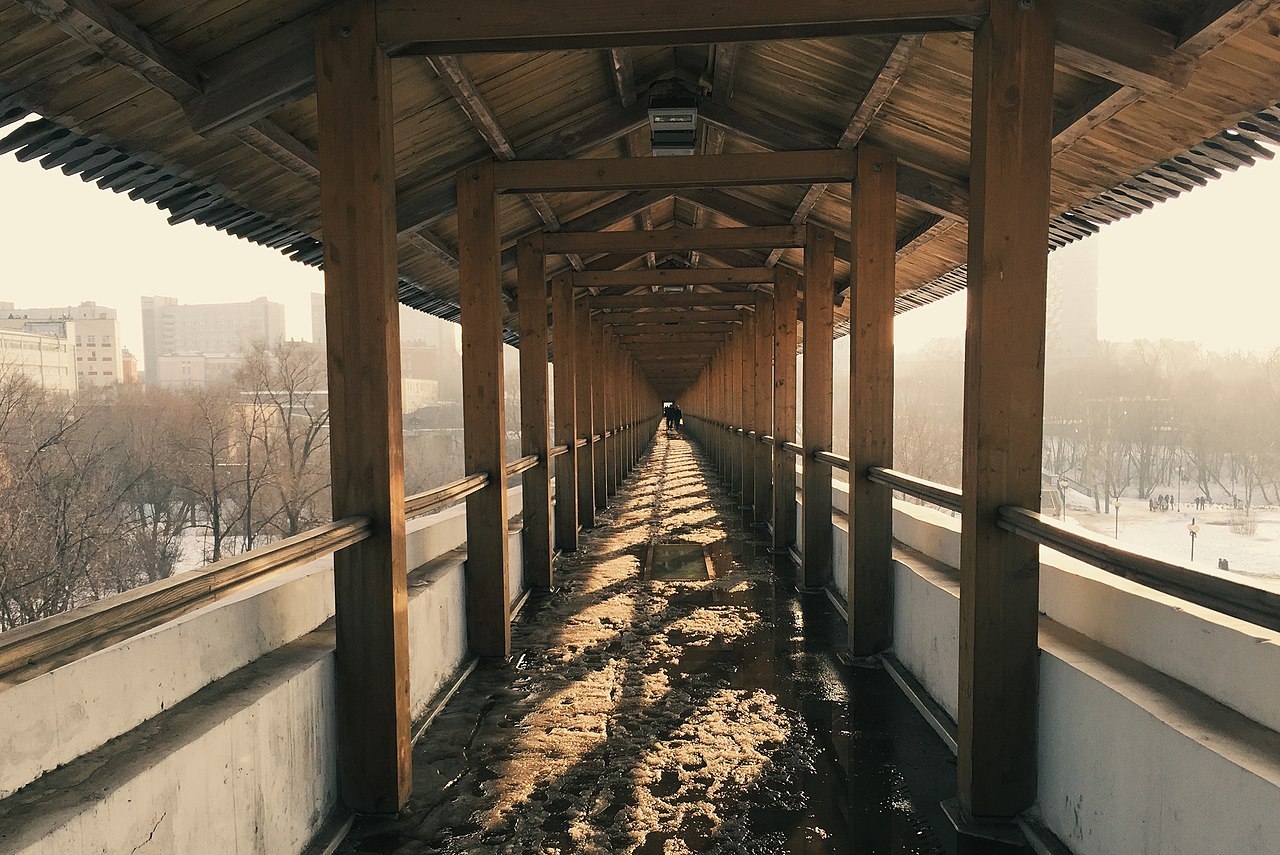
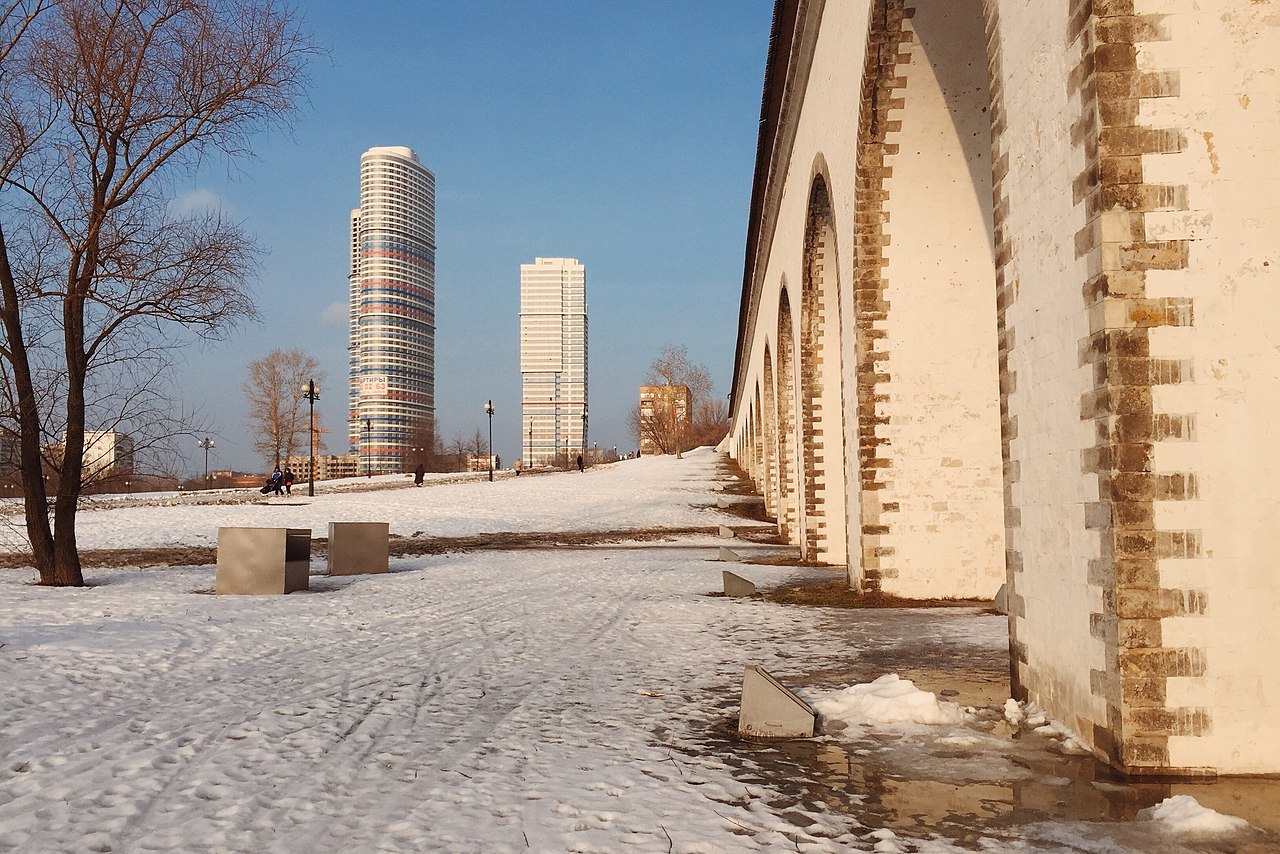
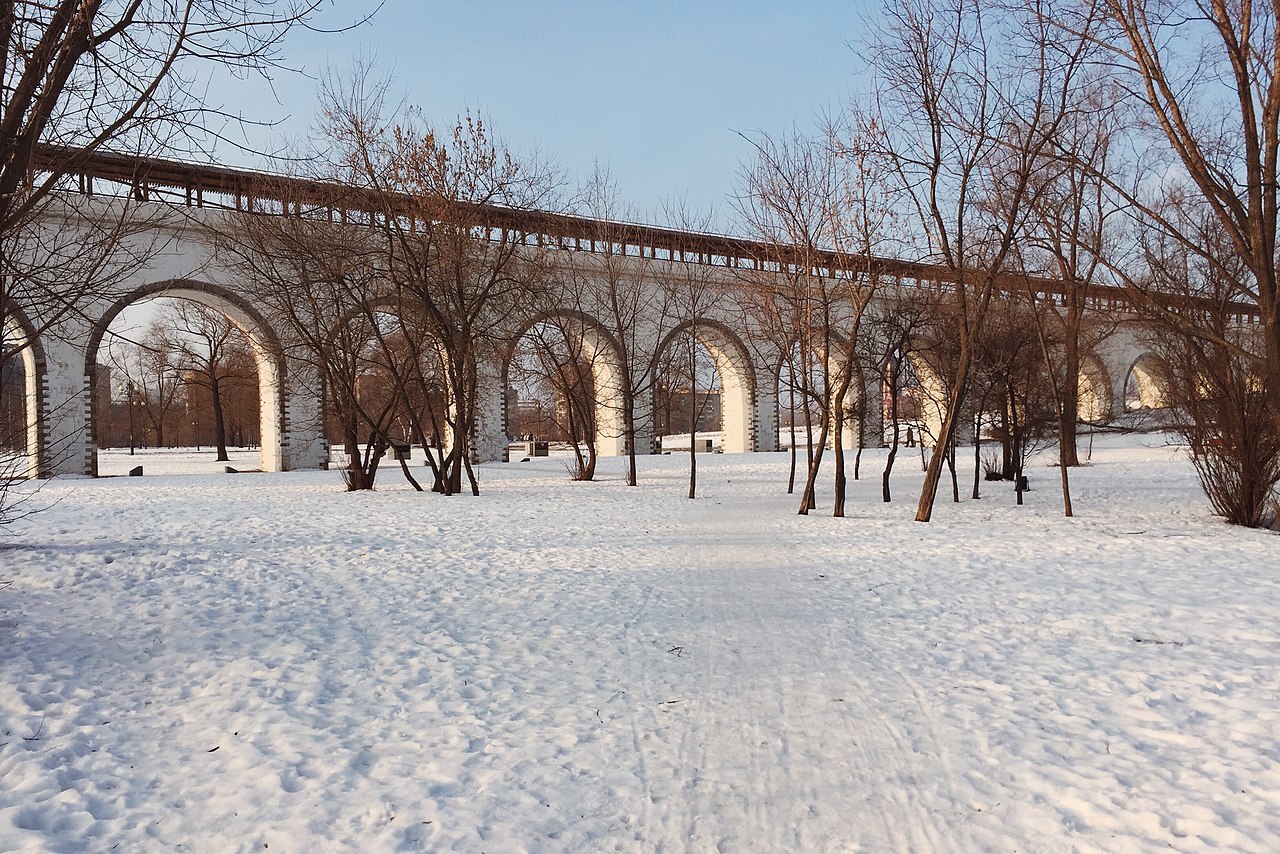
Video: Rostokinsky Aqueduct
ContentsHighlights
The monumental Rostokinsky Aqueduct, included in the list of architectural monuments of the capital, is the only surviving one among five similar systems of the Mytishchi water supply system. It was named after the village of Rostokino. The village occupied both banks of the Yauza River, located at the confluence of the Goryachka (Goryainka) River and forming a kind of fork between the two water streams.
.The design of the conduit was borrowed from ancient Roman engineers. After careful restoration in 2004-2007, the Catherine-era aqueduct was returned to its original appearance. The monumental but elegant structure is supported by 21 arches with 8.5-meter openings. Those wishing to stroll along the covered gallery built over the Rostokinsky Aqueduct should come here on weekends or holidays. On weekdays, access to the top is closed.
.History of the Rostokinsky Aqueduct
In the early 70s of the XVIII century in Moscow there was an epidemic of plague. The pestilence acutely raised the question of eliminating unsanitary conditions prevailing in the throne city. Thus, Muscovites used water from rivers and lakes located within the city limits, but the sewage was directed there as well. Empress Catherine II ordered to create a system of centralized supply of drinking water in Moscow. The corresponding decree was issued in July 1779. A colossal sum of over a million rubles was allocated from the treasury for the construction. The tsarina entrusted the realization of the project to a military engineer, General Friedrich Bauer. He created the Commission of water works and ordered to send 400 soldiers with tools to its disposal every day.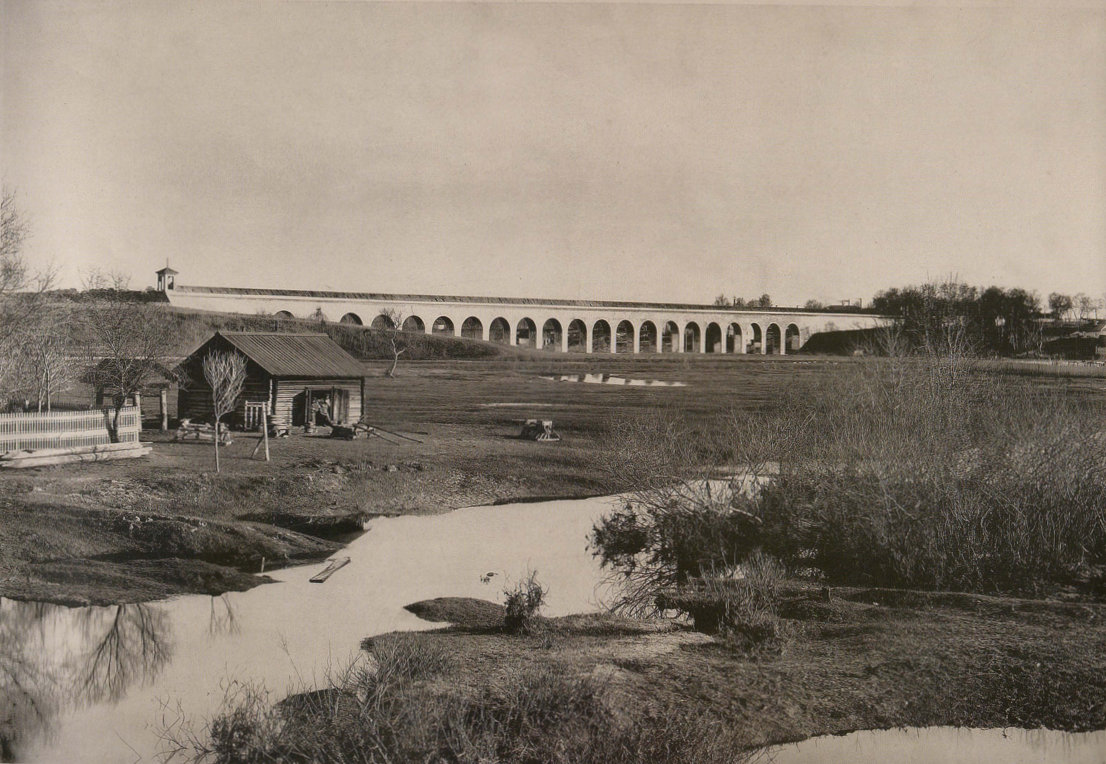
First of all, 43 brick cisterns were built in Mytishchi, where spring water was directed. The project did not envisage waterworks and mechanical pumps. The height difference from the source in Mytishchi to the final reservoirs on Trubnaya Square and Neglinnaya Street was 30 meters, which allowed the construction of a gravity water conduit with a slight incline.
.
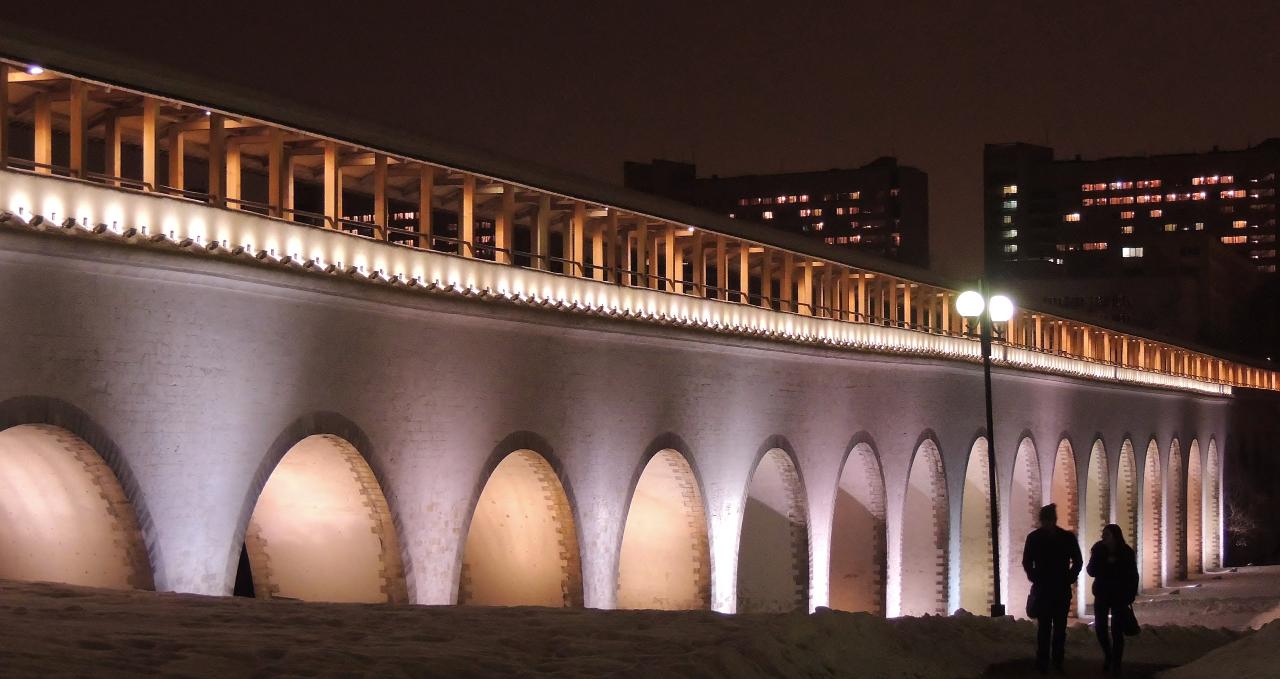
Aqueduct Today
In 2004-2007, the historic Rostokinsky Aqueduct was restored, the heating pipes were removed, and the structure was reinforced. The white limestone masonry was cleaned of its century-old patina. The aqueduct was decorated with entrance portals on both sides and turned into a kind of pedestrian bridge. According to old photographs, a wooden canopy was built over the crossing. To illustrate how the system worked 200 years ago, the gallery recreated the gutter through which the water flowed. Through the transparent covering you can see the details of the construction. In the evenings, the snow-white arches of the aqueduct are spectacularly illuminated.
.
On the once abandoned territory, divided by the Rostokinsky Aqueduct into two parts, a park was laid out, which has become a popular place of rest today. Here planted trees, ornamental shrubs, arranged benches, arranged flowerbeds, flower beds, organized playgrounds for children. Several alleys were laid in the forest zone.
To commemorate the 200th anniversary of the Moscow water pipeline, celebrated in 2004, in the park “Aqueduct” was installed a memorial stone. In winter, Christmas festivities are organized here, a free skating rink with a warm changing room and skates for rent is opened, slides for those wishing to go sledding are equipped. In the warm season, various cultural events are held in the park.
.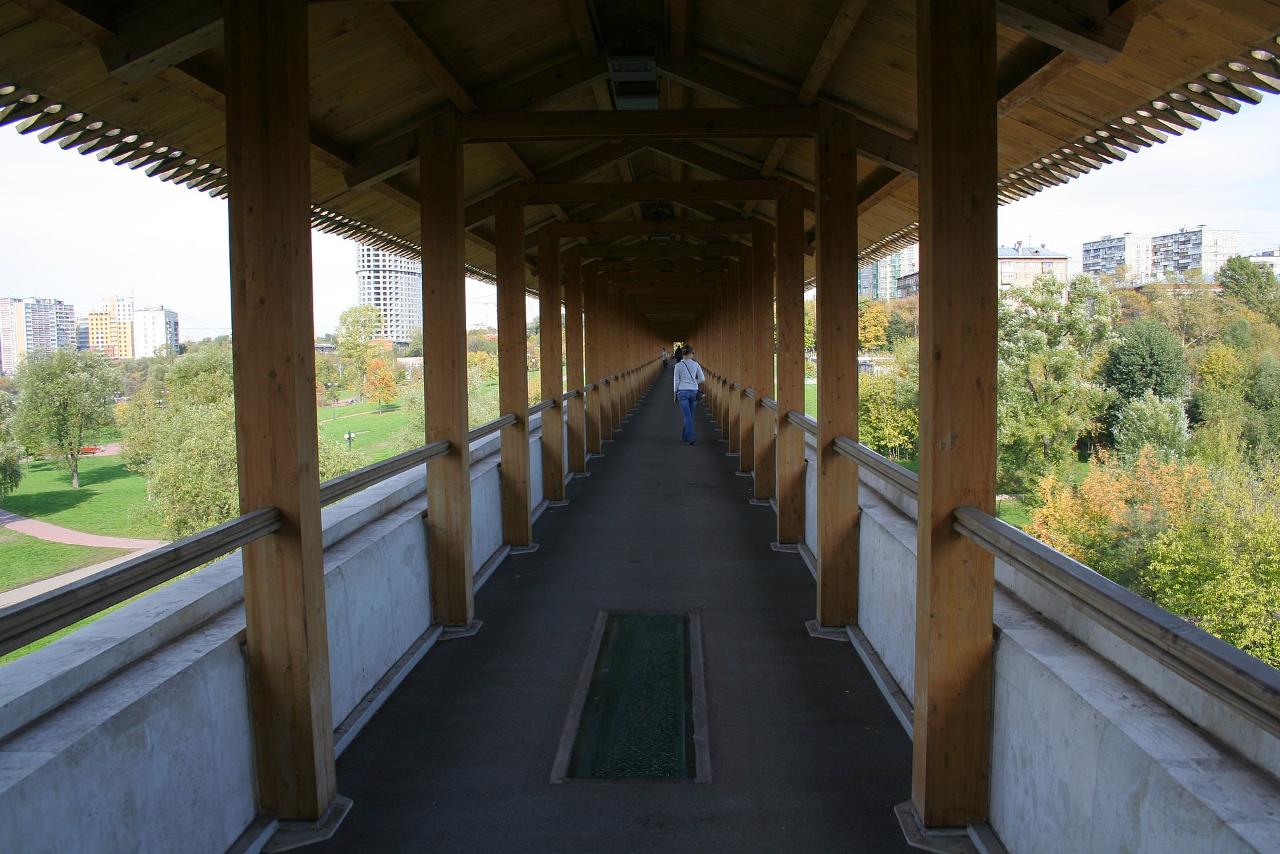
Where to eat
In 100 meters from the park zone there is a cafe “Pie House” (Malakhitovaya Street, 3). The institution is famous for fresh pastries from its own bakery. Hot dishes are served here. The menu includes salads, pancakes with meat, pizza, khinkali, shawarma. The cost of pies with a variety of fillings – 40-60 rubles. On the showcases is a large selection of pastries, cakes. The cafe is open daily from 09:00 to 22:00.
.How to get there
Rostokinsky Aqueduct is located near the metro station “VDNKh”, about 11 km north of Red Square. Coming out of the subway, you should cross to the opposite side of Prospekt Mira. After passing the Cosmos Hotel, head along Yaroslavskaya Street, it will lead you directly to the Aqueduct Park.
.